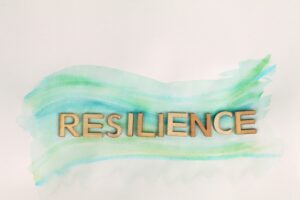Bouncing back when reality bites: Four ways to achieve resilience as a pet professional
02nd March 2021

For many of us, this year has been tough. Resilience may have been the buzzword of 2020 but what does it actually mean and how, as pet professionals, do we apply it to our work?
Resilience refers to the ability to bounce back from adversity and, as such, is linked to psychological health, wellbeing, and personal development. The concept of bouncing back, however, should not be confused with the idea that returning to one’s normal state of functioning or acquiring growth after experiencing adversity is quick, effortless, and a passive process (Denovan, Crust, & Clough, 2017). This is simply not the case. Bouncing back requires both time and effort. It can be painful and there can be struggles along the way. Resilience is, perhaps, best understood as the difference between accepting adversity, growing, and learning from it compared to becoming chronically debilitated by it.
While research suggests that some people are born more resilient than others, the fact that some people become resilient over time suggests that it can be learned (Denovan et al., 2017). With this in mind, the following is a list of four ways to becoming a resilient pet professional.
- View setbacks and failures as an opportunity for learning and growth
A necessary aspect of resilience is that we need to experience setbacks and failures in order to be resilient. How we think about the setback or failure is important. Lessons are learned from failure. For example, think about a near-miss situation where you are working with an aggressive dog and the dog redirects aggression towards you nearly biting your hand. Identifying the situation and factors contributing to the near-miss provide important lessons. This situation may highlight an area where additional training is required, it may provide important information about the dog’s capacity to handle frustration, it may highlight the need to be mindful of small indicators of stress, or the need to be aware of certain stimuli in the environment. These experiences provide lessons so that you know what to do next time so you can continually improve your craft. Seeing stressful life events or situations as a challenge rather than a sign that you are destined for defeat has been shown to decrease anxiety and even improve our performance.

- View stress as a sign you are gearing up for a challenge
How we think about stress is also really important. When our stress response switches on, we go into ‘fight, flight or freeze mode’. Our body is flooded with hormones like adrenalin and cortisol. Our blood becomes thick and sticky. Our senses become heightened. Our muscles tense up and our blood pressure increases. There are other things going on as well. The amygdala, the part of the brain responsible for the fight, freeze, or flight response, is very active during this time. The pre-frontal cortex, the part of the brain responsible for higher-order thinking, like decision making is, however, pretty quiet. This makes sense because when you’re trying to get away from a dog launching to bite you, for example, you’re not going to be concerned about what you’re going to make for dinner that night. You just want to get out of the way!
The problem is, however, that our brains can’t always tell the difference between worrying about an upcoming consultation or discussion with a difficult client and a biting dog. This means that when the stress response is switched on; when we feel acute stress, it can be very difficult to think clearly and perform at our best. When we start thinking “I can’t do this”, “I’m not cut out for this training gig”, “this client must think I’m an idiot” and so on, our brain actually interprets these criticisms as threats and we become even more stressed. While it might be tempting to say to ourselves “snap out of it”, “stop it”, or “calm down”, once our stress response has switched on, the research shows is much more effective to reappraise our stress instead.
Physiologically there is no difference between fear and excitement. It’s how we interpret the symptoms that make it so. Therefore, your pounding heart is not a sign of ultimate failure, it is a sign you are getting prepared and ready to face a challenge. It is a sign you are excited. The success of this approach has been demonstrated in experiments. For example, Brooks (2014) found that participants, who were told to say to themselves “I am excited” before giving a 2 to 3-minute videotaped speech, were more likely to report feeling excited, spoke for longer, and were evaluated by independent raters as being more persuasive and competent than those who were told to tell themselves that they were calm.
So, the next time you are stressed and anxious about an upcoming consultation, difficult conversation with a client, or training session, interpret your nervousness as excitement and the task as a challenge rather than anxiety and a sign of upcoming failure.
It also pays to remember that stress isn’t always a bad thing. A little bit of stress can motivate us and help us perform at our best. Stress can also save our lives. It is a functional and adaptive response to a challenging situation. Making stress work for us is a matter of evaluating our physiological symptoms in a positive way. So rather than thinking our stress is telling us to be afraid, that we can’t do it and that we will fail. Remind yourself that your stress is giving you courage, strength, and motivation.

- Put your setbacks into perspective
Another method of achieving resilience as a pet professional is to enhance compassion satisfaction. For those whose work is of service to other people and animals, compassion satisfaction refers to the sense of meaning and fulfillment one gets from work (Stamm, 2010). Since, research shows it’s linked with lower levels of compassion fatigue in a number of occupations including human healthcare providers (Măirean, 2016), child welfare workers (Salloum, Kondrat, Johnco, & Olson, 2015), and veterinary students (McArthur et al., 2017), there’s good reason to suspect that finding ways to foster compassion satisfaction will help buffer you from the negative effects of failures and setbacks in your work and protect you from compassion fatigue.
Enhance compassion satisfaction by celebrating your wins, those times you made a difference in your client’s life and in the life of the animals you work with. If you have received recommendations, thank you cards, and emails, save them and read over them to remind yourself that you do make a difference and your work matters.

- Be kind to yourself
Remember failure is part of the human condition so be kind to yourself and practice self-compassion. According to Neff and Germer (2017) self-compassion consists of self-kindness, mindfulness, and common humanity. Common humanity describes the idea that failures and setbacks are part of the human condition. Self-kindness refers to adopting a kind and compassionate attitude towards oneself in times of hardship and mindfulness refers to present moment awareness and the adoption of a non-judgemental and accepting stance towards negative thoughts and emotions as opposed to overly identifying or attaching to emotions. The difference for example, between experiencing sadness or anger and being totally overcome by it. Self-compassion is also linked with lower levels of compassion fatigue (Beaumont, Durkin, Martin, & Carson, 2016; Duarte & Pinto-Gouveia, 2017; Duarte, Pinto-Gouveia, & Cruz, 2016). It is also linked with lower levels of depression, anxiety, and greater levels of wellbeing (Neff & Lamb, 2009).
Self-compassion is not about self-pity or being self-absorbed. On the contrary, those who are high on self-compassion actually demonstrate more compassion toward others (Neff & Lamb, 2009). Self-compassion is essentially compassion turned inward. It’s about extending yourself the same amount of compassion that you provide your clients and their animals. Another way to practice self-compassion is to think about treating yourself the same way you would treat a dear friend or family member. This may mean cutting back on self-criticism, being kind and encouraging to yourself, and resting if you are tired.
Putting it altogether
Resilience refers to bouncing back from adversity. To become resilient, we must face adversity. Changing how we think about failure, how we experience stress, and putting the failure or setbacks into perspective all increase resiliency. Finding ways to enhance compassion satisfaction and self-compassion also boost resilience. These are my four ways of increasing resilience. What will you try?
“There is a crack in everything, that’s how the light gets in” Leonard Cohen
References
Beaumont, E., Durkin, M., Martin, C. J. H., & Carson, J. (2016). Compassion for others, self-compassion, quality of life and mental well-being measures and their association with compassion fatigue and burnout in student midwives: A quantitative survey. Midwifery, 34, 239-244.
Brooks, A. W. (2014). Excited: Reappraising pre-performance anxiety as excitement. Journal of Experimental Psychology: General, 11, 1144-1158.
Denovan, A., Crust, A., & Clough, P. J. (2017). Resilience at work In L. G. Oades, M. Steger, A. Delle Fave, & J. Passmore (Eds.), The Wiley Blackwell Handbook of the Psychology of Positivity and Strengths-Based Approaches at Work (pp. 132-149). New York, John Wiley & Sons, Incorporated.
Duarte, J., & Pinto-Gouveia, J. (2017). Mindfulness, self-compassion and psychological inflexibility mediate the effects of a mindfulness-based intervention in a sample of oncology nurses. Journal of Contextual Behavioral Science, 6(2), 125-133.
Duarte, J., Pinto-Gouveia, J., & Cruz, B. (2016). Relationships between nurses’ empathy, self-compassion and dimensions of professional quality of life: A cross-sectional study. International Journal of Nursing Studies, 60, 1-11.
McArthur, M. L., Andrews, J. R., Brand, C., & Hazel, S. J. (2017). The Prevalence of Compassion Fatigue among Veterinary Students in Australia and the Associated Psychological Factors. Journal of Veterinary Medical Education, 44(1), 9-21. doi:10.3138/jvme.0116-016R3
Măirean, C. (2016). Emotion regulation strategies, secondary traumatic stress, and compassion satisfaction in healthcare providers. The Journal of Psychology, 150(8), 961-975.
Neff, K., & Germer, C. (2017). Self-Compassion and Psychological. The Oxford Handbook of Compassion Science, 371.
Neff, K. D., & Lamb, L. (2009). Self-compassion. Handbook of individual differences in social behavior, 561-573.
Salloum, A., Kondrat, D. C., Johnco, C., & Olson, K. R. (2015). The role of self-care on compassion satisfaction, burnout and secondary trauma among child welfare workers. Children and Youth Services Review, 49, 54-61. doi.org/10.1016/j.childyouth.2014.12.023
Stamm, B. (2010). The concise manual for the professional quality of life scale. (2nd Ed.). Retrieved from ttps://proqol.org/uploads/ProQOL_Concise_2ndEd_12-2010.pdf




